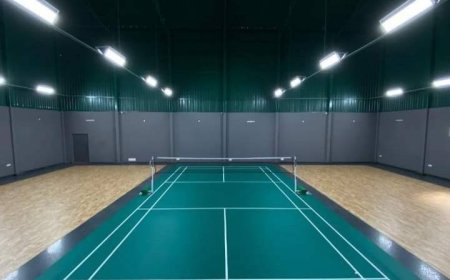Top 10 Skills You’ll Learn in Our Online Interior Design Course

Interior design is a unique blend of creativity, function, and technical knowledge. Whether you're a beginner exploring your passion or an aspiring professional looking to build a career, the right training makes all the difference.
At PaperLoft Design Institute, our Online Interior Design Course is structured to provide a strong foundation and real-world skills. Here's a look at the top 10 essential skills you'll gain through our programand how each one prepares you for success in the design industry.
1.Design Principles and Spatial Planning
Youll start by understanding the core principles that guide all great designbalance, rhythm, harmony, proportion, contrast, and emphasis. Alongside this, youll learn how to plan spaces that are both functional and aesthetically pleasing, considering flow, furniture placement, and scale.
2.Color Theory and Application
Color plays a major role in how a space feels and functions. Youll study color psychology, learn how to build color palettes, and explore how light, texture, and materials affect perception. By the end of the course, you'll be confident in choosing and combining colors to bring your design vision to life.
3.Lighting Design
Lighting can transform a space entirely. Our course covers types of lighting (ambient, task, and accent), fixture selection, layering light, and how to enhance spatial experience using both natural and artificial sources. Youll also learn how to draft lighting plans for various room types.
4.Materials, Textures, and Finishes
An understanding of materialswood, stone, metal, glass, fabric, and moreis critical in interior design. Youll study their properties, uses, and combinations, and learn how to select appropriate finishes for durability, maintenance, and aesthetic goals.
5.Furniture Layout and Style History
Youll explore different furniture styles, their origins, and how to incorporate them into modern spaces. You'll also learn the practical aspects of space planning and furniture layout, including ergonomics and proportion, to create livable, beautiful environments.
6.Technical Drawing and Drafting
Accurate communication of ideas is essential in design. Youll learn how to produce 2D drawings like floor plans, elevations, and sections using manual techniques and digital drafting tools. This skill allows you to present clear concepts to clients, contractors, and collaborators.
7.Software Proficiency (AutoCAD, SketchUp, etc.)
Design software is a core component of todays design workflow. Our course includes step-by-step training in industry-standard programs such as AutoCAD and SketchUp for creating accurate drawings, 3D visualizations, and virtual presentations. Mastering these tools gives you a competitive edge.
8.Mood Boards and Concept Development
Before a single wall is painted or chair is placed, ideas must be organized and presented. Youll learn how to create compelling mood boards and concept presentations to communicate your vision, color scheme, style direction, and material palette to clients.
9.Client Communication and Presentation Skills
Design is as much about people as it is about spaces. Our course emphasizes how to interpret client briefs, conduct consultations, manage feedback, and present your work professionallyboth in-person and virtually. These soft skills are critical for freelance designers and studio professionals alike.
10.Project Management and Budgeting
Beyond creativity, interior designers must work within constraints. Youll gain insight into setting project timelines, sourcing materials, managing vendors, and working within a budget. These practical skills ensure your designs are not only inspiringbut also feasible and efficient.
Final Thoughts
Our online interior designing course is designed to build both creative confidence and practical capability. By the time you complete the program, you'll have the skills, tools, and portfolio needed to begin your journey as an interior designer.
Whether your goal is to start a new career, freelance, or simply develop a deeper understanding of how design works, these ten skills are your first step toward success.








































